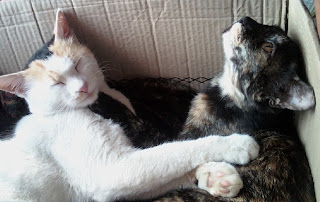Colors talk and they reveal a lot about your personality and preferences. Find out what your favorite color says about you.
RED: Bright, dynamic and dramatic.
Red is the color of joy, love, anger and bravery. People who often wear red are generally energetic and optimistic in nature. They love attention and enjoy being in spotlight. Those who love red believe in living life to the fullest and are stubborn, very persistent in their endeavours. Red lovers are mostly found to be impulsive, sexy, athletic and they are generally prone to mood swings.
YELLOW: Creative and artistic
Yellow is associated with happiness and cheerful spirit. People who love yellow are very social and imaginative. They tend to be intellectual and idealistic. They usually are very clever about their thoughts. They love to have high ideals in life and favour freedom of thoughts and action. They are impulsive and love to make quick decisions.
ORANGE: Social, warm and optimistic
Orange denotes spice and warmth. Orange lovers are extremely friendly in nature and get along with almost everyone. They tend to help people around them and are always full of positive energy. They are tolerant at heart and easily accept others the way they are.
PINK: Romantic, sensual and sensitive
Pink lovers are loving, generous and very kind to others. Pink color is very calm and so are the people who love pink. They are generally sympathetic and compassionate to people around them and dislike controversy of any kind. They are generally reserved and non-violent which gives the impression that they are shy. They have a maternal instinct, they see the good in everyone and possess a positive outlook in life.
GREEN: Practical in life, Loyal and affectionate
Green is regarded as the color of generosity and compassion. They are frank, very stable and down to earth. They always like to do the right thing and possess high moral values. They are loyal friends and are very faithful partners. They love peace and have a stong will. Their biggest desire is to belongand to love and to be loved.
BLUE: Trustworthy, confident and self-controlled
Blue is considered serene, the color of peace and contentment. Blue lovers are very sensitive and are not impulsive or spontaneous in nature. They take their responsibility very seriously and are genuine at heart. They love harmony and make very good friends. They crave for wisdom and thirst for knowledge in their area of interest. They seem to worry for very small things in life and are always extremely cautious.
PURPLE: Compassionate and sensitive
Purple is associated with luxury and sensuality. Such people are artistic in nature , creative and glamourous. They are supportive and always think of others before thinking of themselves. They possess a strong desire to be different and often achieve high authority positions in life. They are true and nature and are generous givers. Very idealistic and often impractical, they love to live in an imaginary world of fantasy.
BLACK: strong willed and love power
Black denotes independence and determination. Black color is a sign of sophistication and black lovers are not emotional as they lack color in life. They are artistic and sensitive, love to be in control of situations and keep their emotions on guard. They are very methodical in their work and love to follow details.
WHITE: Optimistic and far-sighted
The color white is associated with innocence, purity and cleanliness. White lovers are mostly very organized and logical people. You can never find them with clutter around and are very hygienic. They are very confident and practical in nature. They are not at all prone to impulsive behaviour, are poised and self assured. They love simplicity in life.

































